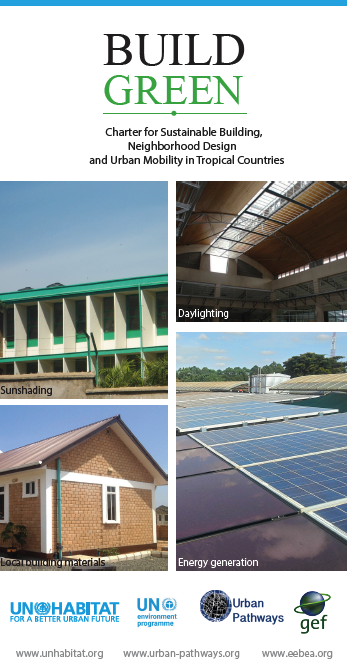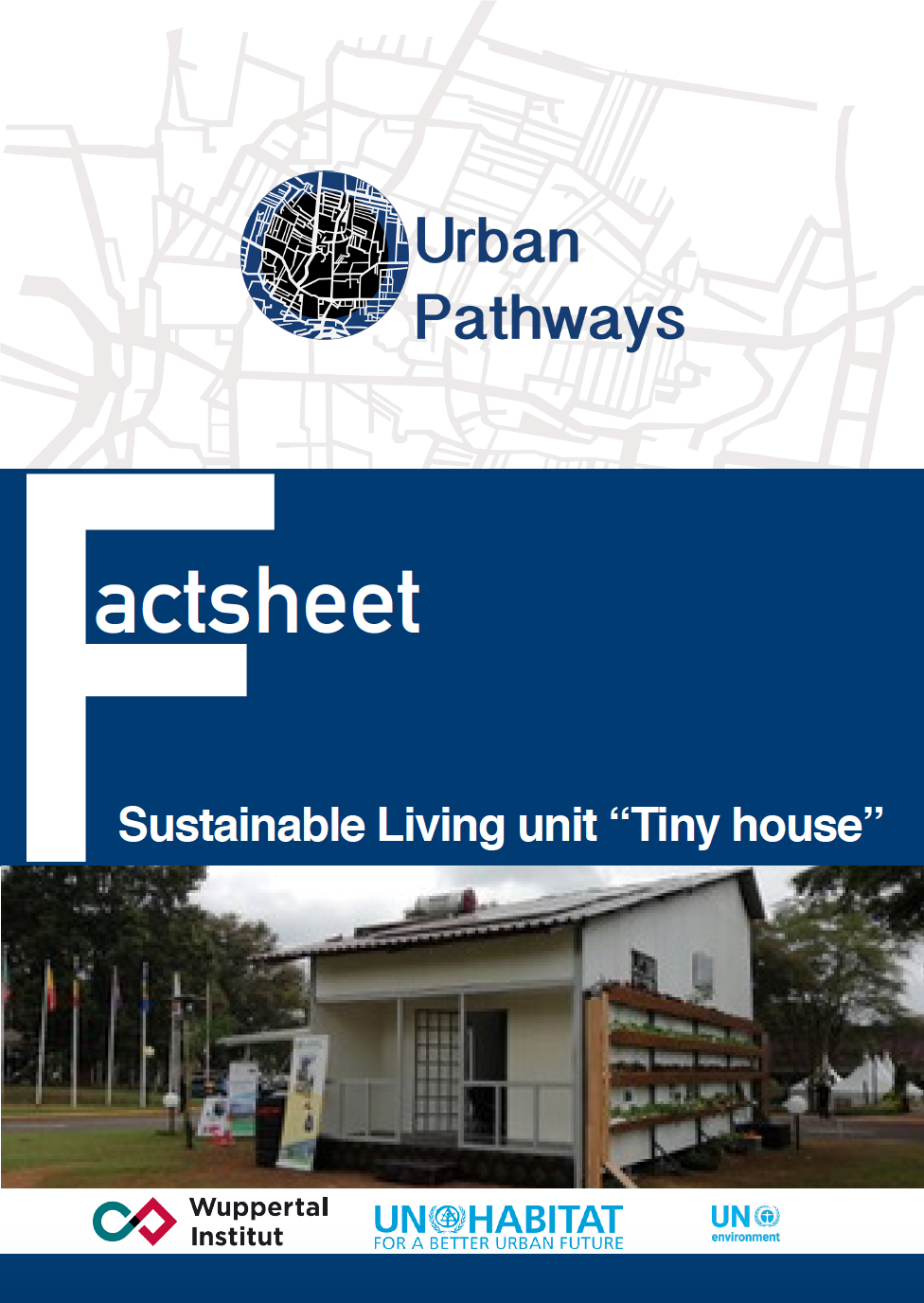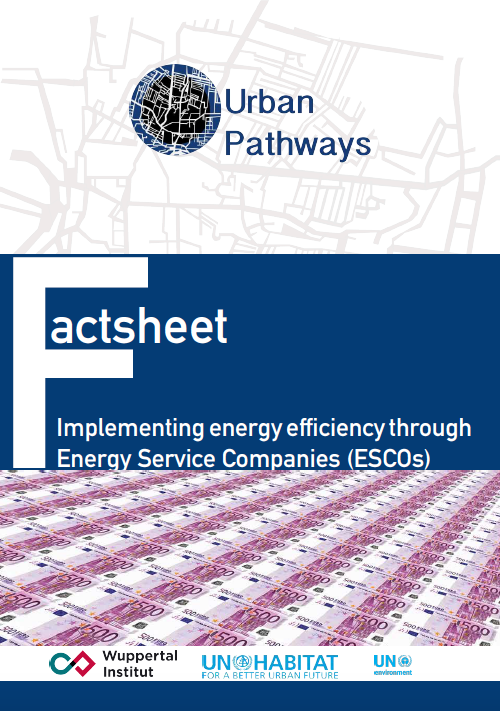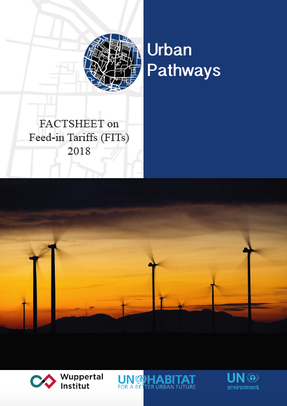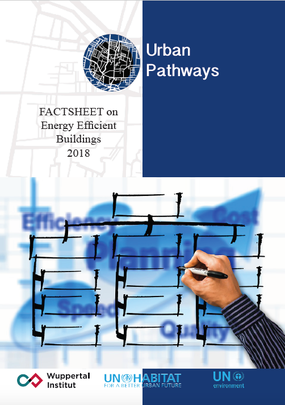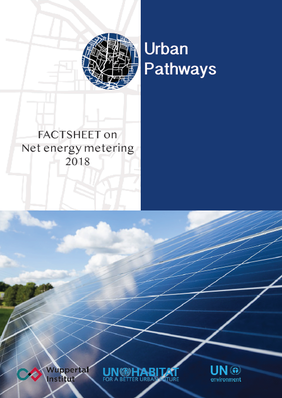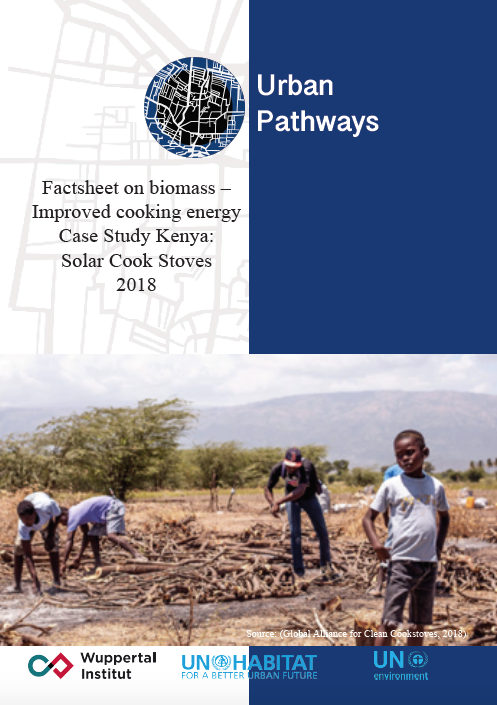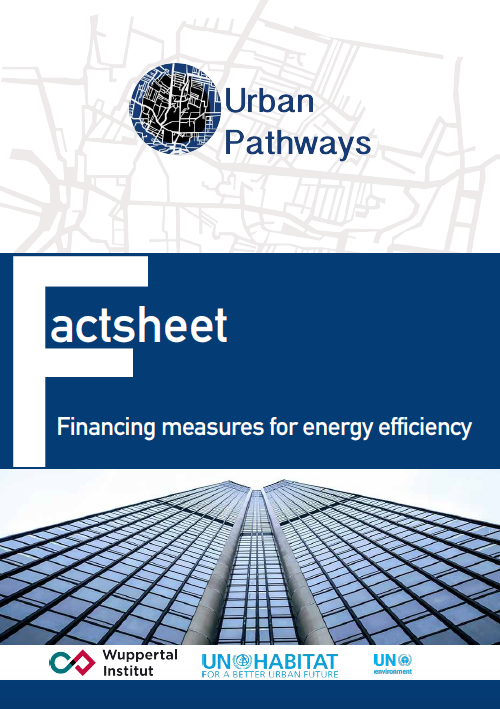Factsheets - Energy
|
Factsheet: Sustainable Living unit "Tiny house"
Sustainable building optimises energy use and incorporates renewable energies, saves water and ensures its reuse/recycling, uses efficient means of transport and reduces distances, undertakes site planning and biodiversity conservation, improves indoor environmental quality and occupant’s health with thermal comfort, reuses and recycles materials and manages waste effectively - aiming at the reduction of the environmental footprint of buildings (see also Urban Pathways factsheet on ‘Green Buildings’). In other to demonstrate this, a prototype of sustainable living unit in the Tropics was designed and executed by the Urban Energy Unit of UN-Habitat in May 2019, partly supported by Urban Pathways project. The prototype of the sustainable living unit “Tiny house” is an affordable house provided with all basic services including: clean energy, food production, onsite waste management, natural lighting and ventilation and many more sustainable design principles (UN-Habitat, 2019). Within the floor area of 56m2, the tiny house has all the basic needs in an ecological and affordable manner. |
|
Factsheet: Implementing energy efficiency through
Energy Service Companies (ESCOs) Energy efficiency holds untapped potential for energy savings and cost savings for cities’ budgets. Technical energy efficiency measures, however, often require upfront investments and cannot be implemented due to tight public budgets. Municipalities and public authorities also often lack the technical and financial know-how for designing and implementing energy efficiency projects, especially when it requires considerable infrastructure upgrade, and associated operation and maintenance (O&M). Market based solutions such as Energy Service Companies (ESCOs) bridge this gap by providing wide range of services, such as conducting energy audits, identifying appropriate energy efficiency measures, assessing project’s technical and financial feasibility, implementing retrofitting measures, and supervising O&M (Polzin, von Flotow, & Nolden, 2016). ESCOs can be private, public, or non-governmental organisations. Case Study: Bhubaneswar - India |
|
Factsheet: Feed-in Tariffs
Feed-in Tariffs (FITs) are a policy measure in which (small, distributed) producers of electricity are offered a set price for any electricity they feed-into the electricity grid. They contrast to generation prices as defined by electricity markets, which vary greatly depending on the supply and demand (and have been known to be negative for periods). As such, the conventional markets offer little security for investors, which tends to deter small-scale, distributed and renewable generators. FITs provide investment security by offering a pre-set price for electricity generated. Classically the price is fixed, but can vary according to generation type (i.e. solar PV, wind) or time of day, or other factors. The costs for FITs can be borne by consumers directly, (as in Germany), by taxpayers (as in the Netherlands), or a combination of the two approaches (as in Spain) (Couture et al. 2010). Case study: Cape Town, South Africa |
|
Factsheet: Energy Efficient Buildings
Buildings account for almost 30% of global CO2 emissions. Promoting energy efficient buildings (new building and retrofitting existing buildings) and environmentally friendly building techniques that aim at reducing energy demand for cooling, heating and lighting, is an essential approach to reach municipal climate goals (Hatch 2017). The initial approach to minimize energy (and resource) use in buildings is to focus on sufficiency, energy efficiency with passive design strategies and then to incorporate efficient active technologies including renewable energy. Case study: Passive House standard buildings in Brussels, Belgium |
|
Factsheet: Net energy metering
Net energy metering (NEM) policy, also called ‘net metering’, provides a transaction arrangement between owners of distributed (energy) generation (DG) systems such as solar photovoltaic, geothermal electric, biomass etc. and the utility from which they consume energy and to which they supply energy (NREL, n.d.). Key technical component of an NEM policy is a net energy meter that calculates the net energy consumption by the DG owner from the utility grid against the energy supplied by the DG systems to the utility grid. The DG owner is compensated if the net value is negative, i.e., energy supplied to the grid is more than the energy consumed. The owner has to compensate the utility if the net value is positive, i.e., the energy supplied to the grid is less than the energy consumed. The value and mode of compensation, DG system type and capacity, billing cycle and other fine prints depend on the NEM policy. NEM is especially useful for the diffusion of DG systems, e.g., in emerging economies, where there is a limited possibility to store generated energy for later use (e.g., a battery less grid integrated solar photovoltaic system). It offers an inexpensive, an easy to integrate and an easy to understand billing concept for owners of DG systems. Case study: Net Energy Metering in California |
|
Factsheet on biomass
Biomass is any organic matter that may and can be used as an energy source - these include wood, crops, yard and animal waste products. Easily available in the natural environment, biomass has aided human civilisation as total primary energy (TPE) since humanity’s origins. Populations in rural areas, especially in developing countries, continue to rely on biomass for TPE – mostly for cooking and heating purposes. An estimated 2.7 billion people globally - 40% of the world’s population - depend on traditional biomass, such as fuel wood, charcoal or crop residues, for cooking, heating and other purposes. Worldwide, an estimated 1.06 billion people do not have access to electricity, and 3.04 billion people still rely on solid fuels and kerosene for cooking and heating (World Bank, 2017). Case Study: Kenya |
|
Factsheet: Financing measures for energy efficiency
Energy efficiency holds an untapped potential for cities’ budgets to be more cost effective. Modern and technologically advance developments have improved measures for energy efficiency, such improvements include lighting systems, heavy electrical equipment such as hydroelectric pumps, transport systems, and power plants. Realising this potential often requires large upfront costs that would then only benefit city administrations in the long run. Constrained by service delivery expectations and political support, city administrations most often have to find funding mechanisms to cover upfront cost necessary to implement technical efficiency in energy consumption. Grant and non grant financing models can be used by city administrators to raise the financial capital investment so that they are able to, in the short term, implement the roll-out of long term energy efficiency measures that would save municipalities recurring costs. This factsheet presents an overview of financing models available to municipalities for undertaking energy efficient retrofitting projects. Case Study: Ann Arbor, State of Michigan USA |



